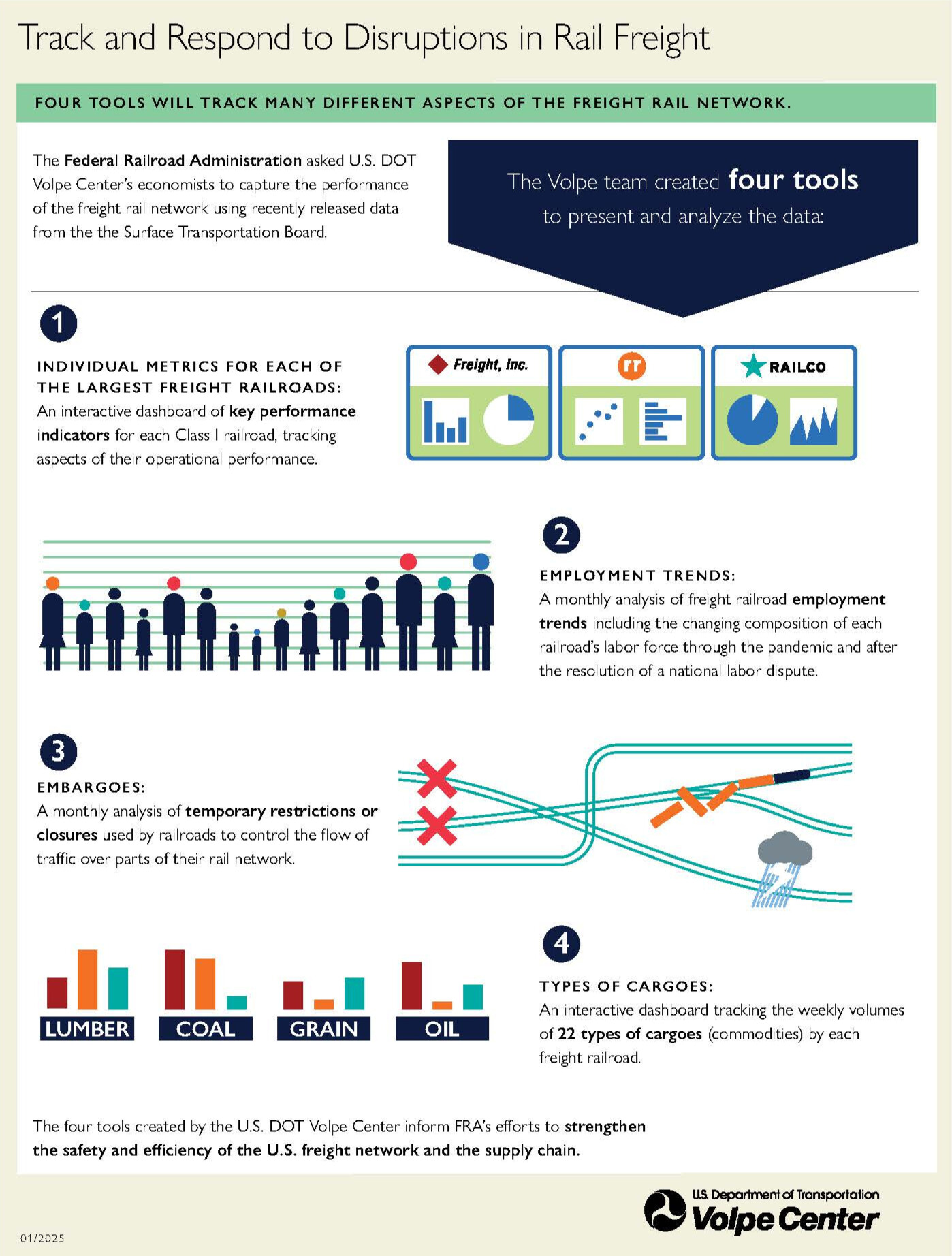The U.S. DOT Volpe Center Creates Innovative Tools to Track and Respond to Freight Rail Disruptions

The COVID-19 pandemic posed several significant challenges for the freight rail network. As freight rail capacity initially fell and then spiked with increased e-commerce, cascading challenges across the supply chain network resulted in acute rail service issues―including low on-time performance, low train speeds, congestion at freight terminals, and low network fluidity. Moreover, disrupted consumer demand for goods, railroad labor disputes, crew shortages, and intermodal operational challenges such as coordination with ports and trucks combined to create unique problems in the freight sector. In short, numerous issues created a domino effect negatively impacting pandemic freight rail operations and contributing to the broader supply chain issues experienced since 2021.
In its oversight of the rail network, FRA asked U.S. DOT Volpe Center’s economists to capture the performance of the freight rail network using data available in new Surface Transportation Board (STB) reports. STB is an independent federal agency that oversees the economic regulation of various modes of surface transportation, specifically freight rail. STB required freight rail carriers to provide a series of new data metrics so it could track rail service quality. These new measures included rail operational service metrics as well as employment metrics at the railroads.
The U.S. DOT Volpe Center created four data solutions to track different aspects of the freight rail network.
- An interactive dashboard tracking each Class I railroad’s self-identified key performance indicators, tracking aspects of their operational performance relative to a target
- A monthly analysis of freight railroad employment trends, including the changing composition of each railroad’s labor force throughout the pandemic and after the resolution of a national labor dispute
- A monthly analysis of railroad embargoes used by railroads to restrict the flow of specified commodities over parts of their rail network
- An interactive dashboard tracking the weekly volumes of 22 types of cargoes by each freight railroad
The four data tools incorporate new data as it becomes available and give FRA the ability to track and respond to multiple aspects of possible disruptions in the freight rail network and strengthen its role in the broader supply chain. The team of U.S. DOT Volpe Center economists developed written analysis from these tools to inform numerous senior FRA requests, including testimony before Congress and written comments submitted to STB. Combined, the four data tools and analyses help FRA understand challenges facing the industry and its role in the supply chain and inform FRA’s oversight of the freight rail network, a key component of the national supply chain, improving the national transportation system.

About the U.S. DOT Volpe Center
Celebrating more than 50 years of federal service to the nation, the U.S. DOT Volpe Center’s mission is to transform transportation for all.
We're Hiring: Learn more about our open job opportunities and what its like to work at the U.S. DOT Volpe Center.
